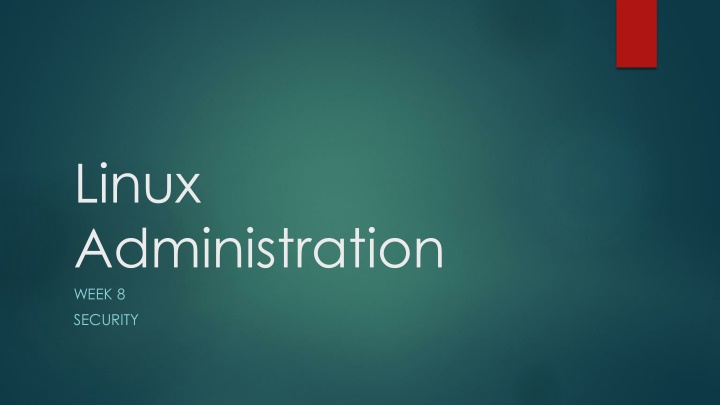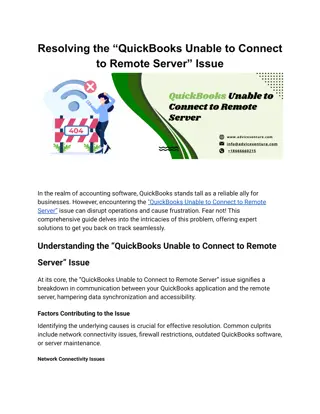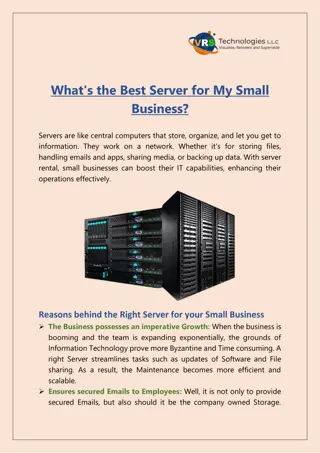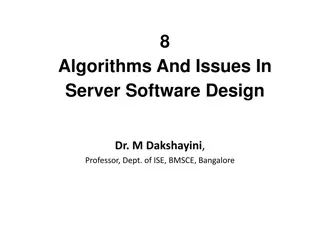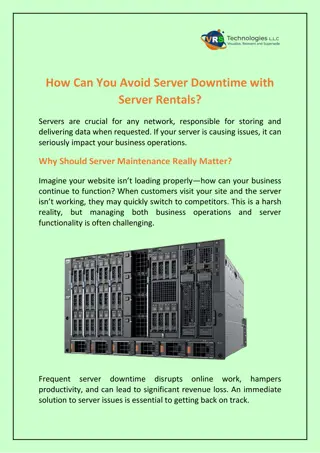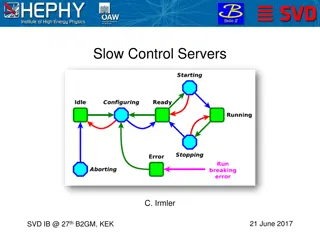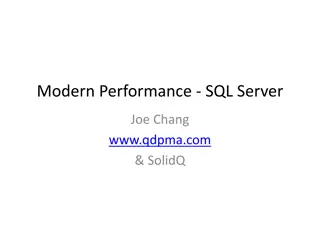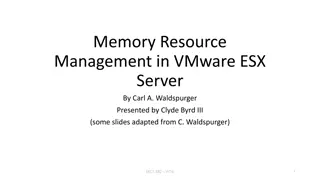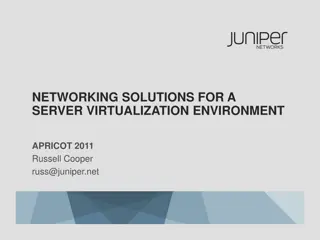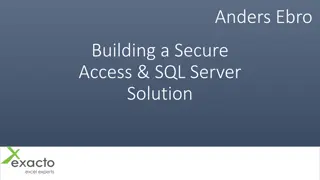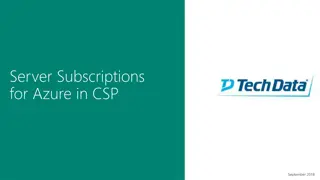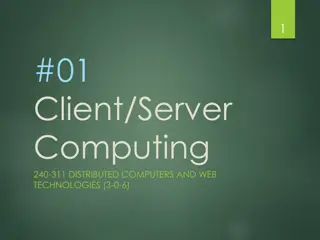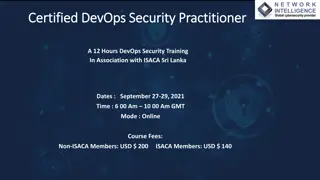Enhancing Server Security Practices
Implementing server security measures like access control, monitoring, hardening, least privilege policies, IDS/IPS deployment, vulnerability scanning, and endpoint protection to safeguard critical systems against cyber threats.
Download Presentation

Please find below an Image/Link to download the presentation.
The content on the website is provided AS IS for your information and personal use only. It may not be sold, licensed, or shared on other websites without obtaining consent from the author.If you encounter any issues during the download, it is possible that the publisher has removed the file from their server.
You are allowed to download the files provided on this website for personal or commercial use, subject to the condition that they are used lawfully. All files are the property of their respective owners.
The content on the website is provided AS IS for your information and personal use only. It may not be sold, licensed, or shared on other websites without obtaining consent from the author.
E N D
Presentation Transcript
Linux Administration WEEK 8 SECURITY
Server Health Tracking - Monitoring Allow list vs Deny list (used to be called white/black lists https://web.archive.org/web/20220902065934/https://www.ncsc.gov.uk /blog-post/terminology-its-not-black-and-white) False Positives and False Negatives What to keep track of Subsystems Memory CPU Disk usage Network Users Processes
Activity Commands to try for server monitoring Subsystems iostat might need sysstat package Nmon likely needs to be installed Memory cat /proc/meminfo CPU Mpstat Processes Ps Pstree Network Status Tcpdump run as sudo uptime
Hardening your system Lock down your hardware (USB booting) and BIOS password lock Check your file system for anomalies (Missing partitions/cmds) Check your repos/PPA, do you still need them all? Check your installed programs/services, are they up to date? Patches? Stil required? Check ports and protocols (SSH access) Root login check (Do you need it enabled?) Is your system up to date and patched? If your system as SELinux, enable it if possible User password rules Log monitoring and auditing Backups Chkrootkit (https://www.tecmint.com/scan-linux-for-malware-and-rootkits/)
Least Privilege Policy of least privilege What can we do to limit user access? What should/shouldn't we do as server admins to limit access? Security policies in general Patching, user education, audits, password policies Security implementation How are we enforcing our policy?
Vulnerability Scanners Find your attack surface Automate security audits Help create a prioritized list of vulnerabilities Easier to keep up to date and run quickly
Endpoint protections Endpoint Protection, or Endpoint Security Goal is to protect enterprise data even in the case of BYOD Endpoint refers to the endpoint of the network, such as things outside the firewall Client-Server model Can be centrally managed server like we have here, or a SaaS (Software-as-a-Service) type solution
Types of scans and support Realtime vs preset time scans Signature vs behavioral/heuristic Scan inbound/outbound traffic or both Support and uptime requirements
Security Health Tracking - Logs What do we track? Application, event, service and system logs How long do we keep logs? When to review logs Log Analysis scripts vs 3rd party tools Log audits and backups Save on write only media (such CD) or mount to different network (So they'd have to hack 2 networks) Hash log files to check for changes
Linux specific logs - Find yours! /var/log/messages - generic system activity logs /var/log/auth.log - authentication related logs CentOS uses /var/log/secure /var/log/boot.log - system initialization and boot related info /var/log/dmesg - Hardware and driver logs /var/log/kern/log - kernel related logs /var/log/faillog - failed logins /var/log/cron - cron job logging /var/log/yum.log - log of installs There are also logs for mail services, Apache, MySQL and more.
Dashboards Know what's happening in real time Get alerts for things you specify Get real time data visualized Collect multiple forms of data Pcap Text Logs Files, directories and more Business analytics Troubleshooting Overall view of your server
Activity - Splunk Following the instructions in the lab on Splunk, register for a Splunk account, install it on your server and join the first topic. The link is in Blackboard for this NOTE: You MUST use your NECC address, it only allows acces to .edu addresses.
Review and checklists How often to do checklist? Can any be automated? (cron jobs) Example Checklist: https://www.process.st/checkli st/server-security-checklist/
Best practices Security in general: https://www.nist.gov/cybersecurity Checklist repository: https://ncp.nist.gov/repository
